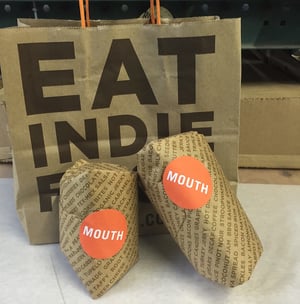Looking around your home or office today, you could probably discover a hundred excellent examples of flexographic printing. That’s how common and widespread this printing technology has become. The reason is simple: flexo printing is affordable, versatile, fast, and produces a high-quality result.
Just take the following three examples as evidence of the incredible power of flexographic printing. All of these serve not just as examples of flexography in action, but as actual improvements in the value and usefulness of paper, made possible through this printing process.
The to-go sandwich wrapper
When a deli, casual restaurant, or food truck, delivers a burger or a sandwich to customers on the go, it’s usually wrapped in something.
From a practical standpoint, they need to make sure any grease, condiments, or toppings don’t slide or drip during transportation. But, with the addition of flexographic printing, the standard to-go sandwich wrapper becomes a moving billboard, advertising the location and capturing the attention of prospective customers.
While plain white butcher paper or freezer paper would accomplish the practical purpose, flexo printing creates marketing value for this common food service tool.
 The tray liner
The tray liner
While the transformation is similar, in the case of the tray liner, the purpose is different.
For diners, cafeteria-style arrangements, or fast food restaurants, dine-in customers usually carry their food to their tables on a tray. You will often see kraft paper or butcher paper lining the tray that helps reduce mess from eating over a tray and adds an extra layer of protection for the food.
While plain paper does this job perfectly well, consider how many more possibilities are opened up by using flexographic printing to turn that plain tray liner into a canvas for any sort of messaging to share with customers:
- Announcements
- Special events
- Coupons
- Menus
- Information for tourists about the local area
- The history of the restaurant
While they enjoy their meal, customers are naturally going to glance down at their tray anyway. Why not take advantage of that “captive audience” to draw more value out of the tray liner?
 Packaging and product wrapping
Packaging and product wrapping
On a different front, consider retail locations that ship or gift wrap purchases for their customers.
For shipping, whether the product in the box is fragile or not, it’s customary to pad the box with paper or something similar. This prevents the product from shifting inside the box and presents a more professional appearance when the box is opened at its destination.
Once again, non-printed paper will serve this purpose. But, if that same paper shows off the store’s logo, contact information, or some other simple marketing message, it again multiplies marketing efforts by getting the brand into customers’ hands.
It can take time for a brand or message to resonate with customers, so it’s savvy to take advantage of new opportunities for branding. As shown in these three simple paper products, flexographic printing offers an excellent way to accomplish that without adding significant cost to the marketing budget or taking away from the customer’s experience.
Learn more by downloading our guide, The Insider’s Guide to Flexographic Printing.



